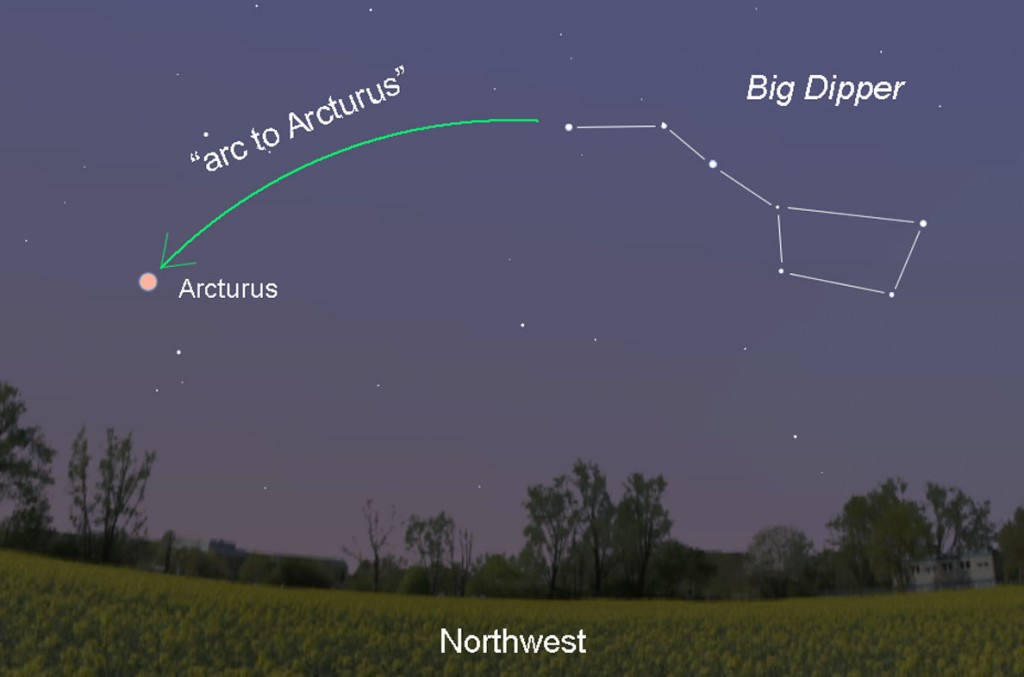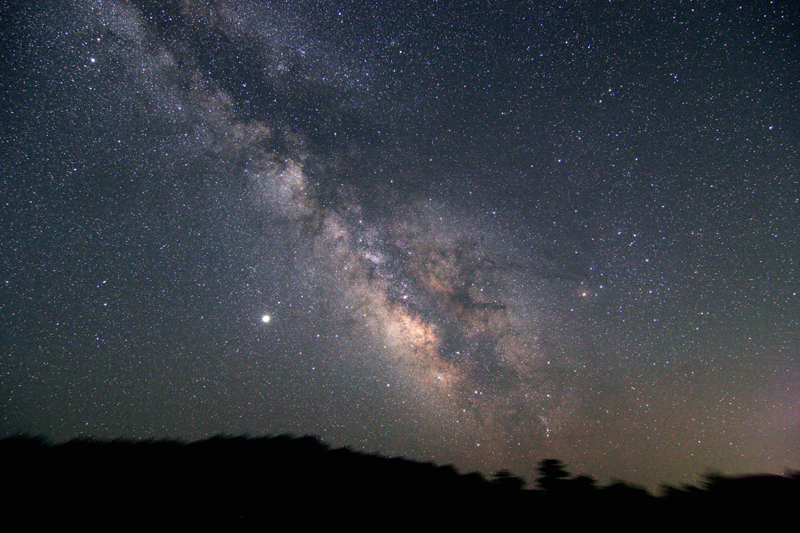During the summer, you can find the Big Dipper low in the northwest sky in the early evening. Just after sunset, you can also find the bright star Arcturus just about to set on the western horizon. Find it by first finding the Big Dipper, and then "Follow the arc [of the Big Dipper's handle] to Arcturus"...

The summer triangle consists of the brightest stars in three different constellations:
- Vega (VAY-ga) in the constellation Lyra (LIE-ruh),
- Deneb
(DEN-eb) in the constellation Cygnus (SIG-nus), and
- Altair (AL-tare) in Aquila (a-KEE-la)

(The summer triangle rising
in the East in early summer.)
The easiest constellation to recognize in the summer sky is Cygnus, with its fairly bright star Deneb (at the Swan's tail).
In some stories, Cygnus represents Zeus turned into a swan to seduce Leda, a Queen of Sparta, who gave birth to Gemini twins and Helen of Troy.
Alternatively, you can see it as the Northern Cross.

During the summer, the Milky Way stretches overhead, through the constellations of Aquila and Cygnus. Remember the Milky Way is our view of our own galaxy from the inside. Grab a pair of binoculars and scan the Milky Way!
If you have a dark sky, follow the Milky Way down towards the southern horizon. Here, the Milky Way is at its brightest, laced with dark dust clouds -- we are looking directly towards the center of our galaxy!
Also to the south, you can see the bright star Antares (an-TAR-eez), the heart of Scorpio, the scorpion.

Image courtesy Frank Ryan,
Jr's Astrophotography
website
During Summer 2017,
- Jupiter can be found setting at sunset, very near the
southwest horizon.
- Saturn is low on the southern horizon at midnight.
- Venus will be rising
in the east, very brightly, just before sunrise.